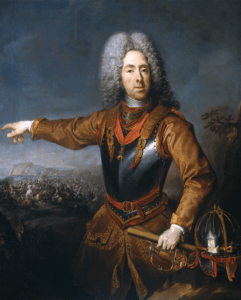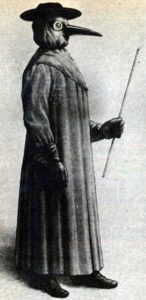
One Man and a City History
After Eugene of Savoy sacked Sarajevo in 1697, the city had a very rough century-and-a-half. Nearly all the wooden buildings had been burned to the ground and many of the stone buildings had suffered significant damage. The city’s Catholic population had fled in fear of retribution, following the Austrian army which had specifically targeted Muslim buildings and places of worship.

The Ottoman rulers used the smoking ruins of Sarajevo as an excuse to move the administrative capital of the Eyalet of Bosnia to Travnik, neatly bypassing the Sarajevans who had proved themselves to have an exasperating independent streak that required a lot of attention. Without direct oversight, that independent streak, coupled with the stress of rebuilding and recurring Black Plague outbreaks turned into two decades of anarchy in 1747. By this time, Sarajevo had suffered yet another devastating fire and the city had become a battleground between two rival families – the Morić and Halibašić clans.

Anarchy isn’t good for historical records, things get ruined and burned. The politics get muddy, and reasoning flies out the window. There would be almost no documentation of this time if it weren’t for one man – Mula Mustafa Bašeskija. Between the 1746 and 1804, he nearly single-handedly preserved the customs and events that took place in Sarajevo, and he recorded the life stories of over 4,000 Sarajevo residents that would otherwise have been forgotten.
“Only what is written remains, and everything else is forgotten,” Bašeskija said.
Bašeskija was born in Sarajevo in 1731, in an impoverished Bosniak family who had descended from Janissaries. He married a woman named Safia and they had ten children, although tragically only three of them survived. Initially he had a shop under the clocktower, but later Bašeskija was able to turn to calligraphy, teaching, writing contracts, and recording histories.
Bašeskija recorded that the Years of Anarchy were set off by the oppression of the poor by the Ottoman Pashas, and the two Morić brothers, along with a man named Sari Murat, became known as leaders of the anarchy movement. There is some evidence in the contemporary accounts of Bašeskija that the brothers were known more as bandits at the time, and used to sit on Šeher-Ćehjina Bridge smoking and refusing to let people pass – with sounds quite in line with what young leaders of an anarchist movement might do when there is no governmental oversight.
The traders of Sarajevo eventually had quite enough of the anarchy and fighting in the city, it was bad for business. Working together they lured the leader, Sari Murat, to the Aga Inn and murdered him. After all, if you cut off the head of the snake, the body will eventually rot and die.
The traders forgot that it sometimes takes quite a while for the snake to die, and the snapping teeth are still poisonous. Sari Murat’s supporters, the Morić brothers among them, acted quickly to take their revenge and murdered the traders responsible.
Now the citizens of Sarajevo had had enough. They descended upon the anarchist group – arresting 23 of them. The Morić brothers themselves were apprehended while praying in Bakr-baba’s Mosque.
The unfortunate 23 anarchists were dragged to the White Fortress in Vratnik where they were each strangled. Each death was marked by the firing of the canon so that the entire city knew as each troublemaker was killed.
After the anarchists were put to death ballads began to be sung to the unfortunate Morić brothers, songs which celebrated them as heroes and fighters for Sarajevo’s freedoms. The ballads appeared quickly, although the memorial plaque in the courtyard of Hadžijska Mosque, where they are buried with their father, doesn’t refer to any of these exploits – only the sorrow of their mother.
“The Morić brothers, Hajji Mehmed and Ibrahimaga, were suddenly blown away by a deadly and bitter wind, and killed both of them in an instance. They left their mother full of sorrow, and may God have mercy on them. With one sigh, the date was written. They would perish forever in 1170. —wall of the mosque courtyard
Without Bašeskija’s writings, little would be known of the events that culminated in the killings of the Morić brothers other than the ballads. But Bašeskija covered nearly sixty years of Sarajevo history during a very turbulent time – he recorded deaths from plague and the more than 150 deaths during the time of anarchy. He recorded intimate details of the lives of people in Ottoman Sarajevo, including rare details about the lives of women.
Although Bašeskija’s chronicles are invaluable for people studying Sarajevo’s history, he also did much to continue a tradition of learning in the city. In addition to his duties as a scribe and national chronicler, he created a group called Sohbet-halva, which gathered to talk and drink coffee, and also to spend time reading.
Bašeskija was so important to Bosnian history and culture that the Bosnian poet Abdulah Sidran composed a very popular poem about him more than 200 years later.
“Life is short for Sarajevo,” said Abdulah Sidran.
- June 2, 2020
- Bosnia and Herzegovina
